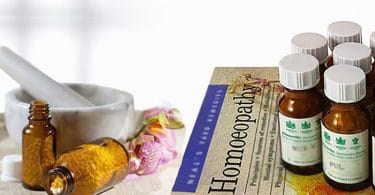Background
When I undertook my formal studies in homeopathy we were taught to give dry doses for chronic cases. Interestingly, in acute cases, remedies were usually prescribed as liquid doses in a 10ml bottle with a dropper.
In both scenarios, I rationalised that remedies were prescribed in this way for practical reasons: give a chronic patient a dry dose and see them in a month. In acute cases, the patient could carry the remedy with them and take as needed. Easy and practical for both the homeopath and the patient.
In the first 3 years of my practice I therefore followed the above posological approach only because I knew no better. In that 3 years I had some good successes, failures and at times, a mix of both within the same case. One could argue that this is probably the standard journey for most homeopaths in the initial stages of their practice. I was fairly satisfied with my overall performance as a homeopath but as time went on, cracks began to appear and questions arose that I had no answer for.
These questions included:
– why does it take most of my patients so long to achieve rapid and progressive improvement?
– how can I adapt a remedy to fit a patient’s individual sensitivity
– being taught that change on a mental/emotional level only occurs on higher potencies (200C, 1M and higher), how do I avoid aggravations that can result?
– why does Hahnemann clearly state in his book, Chronic Diseases, that repeating a remedy in the same potency is detrimental to the patient, yet most homeopaths I knew did that?
– how do I treat hypersensitive patients without aggravating them?
– why do I struggle continuously with aggravations in chronic skin cases?
– is giving a patient one pillule of a remedy and then not communicating with them for a month the ideal patient/practitioner relationship?
Three years into my practice Dr. Luc De Schepper came to Brisbane, where I live in Australia, and gave a weekend seminar. One of the things he did on that weekend was introduce us to liquid dosing, its basis in the Organon and its benefits. Liquid dosing is also referred to as wet split dosing because all the remedy contained in the dissolved pillule is split into and administered in many smaller doses. After that weekend I switched ALL my chronic patients from dry dosing to liquid dosing and the changes were amazing. Over time every one of the above questions was answered as a result of Dr. Luc’s teachings (based on Hahnemann’s writings) and putting them into practice.
So let’s start at the beginning. To do that we go to Hahnemann and the Organon. There are six editions of the Organon. Up to and including the 4th Edition (1829) Hahnemann advocated dry dosing in chronic cases, only to be repeated when the symptom picture started regressing. There was to be no repetition while the patient was still improving.
In the 5th Edition (1833) Hahnemann introduced three significant changes:
– the upper potency limit of 30C was removed
– remedies could now be given in water solutions, with succussions before each dose
– the remedy could now be repeated while improvement was occurring
In Aphorism 286 Hahnemann states:
… the effect of a homeopathic dose of medicine increases, the greater the quantity of fluid in which it is dissolved when administered to the patient, although the actual amount of medicine remains the same.
Hahnemann had observed, through experimentation, that remedies acted more powerfully when dissolved in water. He had determined that liquid remedies act more effectively than dry doses because the remedy comes into contact with a greater number of nerve endings in the mouth.
This seemingly still leaves us with the dilemma of not being able to repeat a chronic remedy while improvement is occurring in the patient. This often prolongs the journey to cure due to the infrequency of dosing.
In Chronic Diseases (1997, p. 156) Hahnemann states: …our vital principle cannot bear well the same dose of medicine be given even twice in succession, much less more frequently to a patient. He further elaborates that in doing so, the former dose of the medicine is partly neutralised or new symptoms belonging to the medicine appear which impede the cure. Changing the potency of each dose by succussing allows the vital force to accept the medicine more frequently.
In a footnote to Aphorism 287 in the 5th Edition Hahnemann reiterates his solution to this dilemma of dry prescribers:
The higher we carry the attenuation accompanied by dynamization (by 2 succussion strokes), with so much more rapid and penetrating action does the preparation seem to affect the vital force and to alter the health.
By succussing a liquid remedy immediately before taking it each time, which is impossible to do with a dry dose, the strength of the remedy is slightly increased thus further stimulating the patient’s vital force each time. This enables a more rapid recovery to occur. In addition, the dose can be adjusted to fit the individual sensitivity of the patient which reduces the potential for aggravations. So why do many homeopaths still use dry dosing with chronic patients? Perhaps, like me, they were never taught otherwise. Or they are aware of Hahnemann’s changes in the 5th Edition in this regard but they just opt for the easier, less labour-intensive approach.
This double change in posology, liquid doses with succussions, introduced by Hahnemann in the 5th Edition of the Organon, also explains why the 30C potency is effective in beginning chronic cases; a practice Hahnemann often followed. I also employ this in my clinic with great success. In my homeopathic training the 30C potency was considered to produce change on a physical level but mental and emotional change was only considered to occur as you progressed up the potency scale. Many homeopaths I know were taught this because it was based on the dry prescribing method. One big disadvantage in prescribing dry doses is, you are increasing the potential for aggravations because you cannot adjust a dry remedy to fit the individual sensitivity of the patient. The higher you go in potency, the greater that potential for aggravation is.
Wet split dosing comes into its own when treating hypersensitive patients. These are people who react to the smallest quantities of medicines (allopathic or non-allopathic), perfumes, foods, environmental toxins, etc. Many of these will even aggravate on a dry dose of low potencies including 6C. In these cases, one can start with 6 C but begin by giving only 1 drop, diluted into a first glass if necessary. If that elicits no response then the dose can be gradually increased until an improvement is observed. Some hypersensitive patients, however, can still experience an aggravation from a 1 drop dose! This leaves the practitioner with the two further dosing options of olfaction and skin dosing.
Chronic skin cases are notoriously sensitive to treat as well. When I did dry dosing in my practice I had limited success with chronic skin cases. This changed dramatically when I employed the wet split dose method. I always begin skin cases with the 6C potency and have achieved great success doing so. With the passage of time as the patient experiences progressive general improvement, including the skin, the potency can be judiciously raised.
Prescribing according to the wet split dose method is definitely more labour intensive for the homeopath. In the first month of treatment especially, the patient contacts the practitioner, when needed, to fine tune how they take their remedy. I find that after the first month or two have passed the patient becomes fairly astute at monitoring their own progress. After the first month of treatment I teach them to manage their own succussion increases when indicated. Although there is more contact between the practitioner and patient in between consults using the wet split dose method, I find a higher quality practitioner-patient relationship results. I have also noticed over time that patients develop a very good understanding of homeopathic posology.
In summary, employing the wet spilt dose method of the 5th and 6th Editions or the Organon enables the homeopath to consistently achieve the ideal of Aphorism 2:
The highest ideal of cure is the rapid, gentle and permanent restoration of health; that is the lifting and annihilation of the disease in its entire extent in the shortest, most reliable, and least disadvantageous way, according to clearly realizable principles. (6th Edition)
Argentum Nitricum Case
( see the full case here https://hpathy.com/clinical-cases/argentum-nitricum-case/ )
The remedy was made up in a 200ml bottle with a dropper.
Test Dose
0 succussions, ½ teaspoon direct with instructions to ring in 3 days
Begin with no succussions (because patient hasn’t had the remedy before) and ½ tsp direct because we want the test dose to elicit a clear response.
3 day follow-up
On the first day I felt good; so different to what I normally feel. Feel calmer and my anxiety has improved by 100%. No longer avoiding my shopping centre car park. Not stressed driving in congested traffic and rain. Today (3rd day) I can feel I am going backwards as the anxiety is returning.
Indications are we have the simillimum. As patient regressed on 3rd day, the symptom picture indicates they need their remedy every 2nd day.
Prescription:
4 succussions, 2 drops from remedy solution bottle (RSB) diluted into ½ metric cup water then 2 drops out. Once every 2nd day.
The remedy is now diluted into a first glass so it will act gentler, reducing aggravation potential
2 weeks later
No stress despite issues at work. More detached generally. Not compulsively checking things at work. Biggest change was no stress while driving. Watched a video of an octopus which would normally make dry retch but felt OK. Come down with influenza but it was unusually mild a I didn’t get the usual post-flu coughing. Haven’t looked at budgeting app on phone until the last 2-3 days.
Prescription
Increase succussion to 6
Succussions are increased as the symptom picture indicates a plateau beginning to occur (looking at budgeting app). The increase in succussions is 2 as more may produce an aggravation and 1 won’t be enough.
2 weeks later
Driving posture much more relaxed with one hand; usually sit bolt-upright gripping the steering wheel. Much less stressed at work; especially by factors outside my control. More assertive with difficult customers. If my father talks about my brother I don’t get agitated, more indifferent. Usually experience intense PMT the week preceding menses. This time it was only for 1 day and less intense, with less bloating. Appetite decreased and desiring healthier food. No longer obsessing about finances. Washing hands less and not using gloves for cooking.
Prescription
No need to increase the succussions as the symptom picture is indicating general, progressive improvement.
Continue as above increasing the succussions when required.
Once the patient reaches 12 succussions, then usually the potency can be increased. In chronic cases I will go to LM1 after 30C. To compensate for the increase in potency the succussions are decreased by 2 (to 10 succussions).
Martin Costigan has written an online Homeopathy Advanced Case Management Course. Previously presented in Australia and internationally in a seminar format, Martin’s course is now available for you to watch at your own pace, so you can incorporate his teachings into your practice. This course covers several aspects of advanced case management and has benefitted many beginning and experienced homeopaths in achieving more consistency and success in managing their own cases. To view the course curriculum and obtain further information go to: www.martincostigan.com/courses





I liked the case, good info. However, LM is inaccurate. The Roman numerals do not express the potency properly. They should be called “Q” potencies.
Some useful info: https://homoeopathy-course.com/dispensing-repetition
DEAR SIR,
PREVIOUSLY THE REMEDIES WERE SELLING WITHOUT DROPPER. IT WAS NOT POSSIBLE FOR PRACTITIONERS TO MAINTAIN 500 OR SO ACCORDING TO NUMBER OF REMEDIES. NOW A DAYS REMEDIES NUMBER HAS REACHED TO 5000 OR SO. IT IS EASY TO FILL REMEDY INTO 1/2 OR ONE DRAM VIAL WITH A FEW DROPS OF MEDICINE ON GLOBULES WITHOUT THE HELP OF DROPPER. THE PATIENT CAN CONVENIENTLY CARRY IT. THERE AFTER HE CAN DISSOLVE IN WATER AND TAKE OR SIP IT AS DESIRED. HE CAN SUCCESS IT UPTO 5 TIMES. THE SUCCESSION SHOULD NOT BE DONE TOO MUCH AS DR BOENNINGHAUSEN STATED THAT TOO MUCH SUCCESSION MAKE REMEDY POISON AND DANGEROUS. NOW A DAYS I DRAM AND ABOVE VIALS ARE COMING WITH ITS OWN DROPPER TO BE FITTED ON THE MOUTH OF THE BOTTLE SEPARATELY IN EACH CASE. SO IT IS NOW EASY TO GIVE REMEDIES IN LIQUID FORM
THANKS
DR C S GUPTA
Good article. However I think there have been so many years from the discovery of the 6th edition, and it still wonders me how many people find it new in 2019. We have to do an effort to apply ones and for all the posology of the 6th. Liquid dosis and Q potencies should be used in every case and anytime, chronic or acute. There are only benefits in using Q potencies in liquid dosis and those how disagree it’s always because they have never tried.
I too have made some observations regarding repetitions. I have found repetitions are not necessary at all if the prescription is accurate. If it is inaccurate again repetitions are useless obviously.
Any other opinion seems to be arbitrary to me and not acceptable. besides there is no scientific basis for repetitions. homeopathic cures are not scalar improvements, they are transformations. That means, a single dose of the similimum alters the symptoms totality in such a way as to match the descriptions of a different remedy and this transformation is instant too. Hence the similimum is not a similimum anymore once it is administered in whatever form. It becomes a wrong remedy and its effect is an aggravation as mentioned by Hahnemann in aphorisms 179.. to 183.
That is, there is only a completion of the incomplete picture of the ( next) remedy rendering accurate prescribing easier. That is a scalar aggravation ( Not transformation) bcoz there’s no change in remedy picture. But somehow varying the potency doesn’t cause this aggravation is true. we can guess why. The remedy once administered continually gets potencised in the body due to excretion and intake of fluids which naturally dilutes the remedy already in the body. Hence an addition of such more and more dilute quantities naturally have no effect. But I have practically found such repetitions totally unnecessary.
The seeming Impunity of the Body to LM potencies also contradicts the Otherwise consistent Law of similars and thus begs a separate explanation as well. It could be due to the Addition of relatively larger quantity of water at an intermediate stage, there is what is called as “NOISE” in the language of signal theories. due to the existence of such noise, the real ingredient gets obscured ( please note, its not only getting diluted but getting more and more obscure) Hence rendering detection by the body quite difficult and less probable in the surrounding Noise of impurities.
Otherwise there is no explanation for the milder and probably deferred action of LM potencies consistent with the other rules of homeopathic effects.
The Claimed beneficial effects of LM potencies is questioned by some Homeopaths who are also Very Close prescribing Experts who find the inappropriateness of Repetitions.